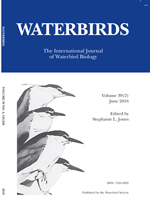Intraspecific and intersexual morphological variation is common in many groups of birds, but few studies with larger sample sizes exist for describing such variation in ardeids. Since 2008, three species of long-legged wading birds were captured for telemetry studies in Wichita, Kansas, USA, and on the East Coast of the USA in North Carolina, Maryland, and New Jersey. Captured individuals were weighed and their culmens and tarsi were measured before they were released. Beginning in 2013, a blood sample was collected from each bird and was used to determine its sex. Measurements of 103 birds of three species were used to examine statistical relationships among mass, culmen length, and tarsus length, and to determine whether males of Great Egrets (Ardea alba) and Snowy Egrets (Egretta thula) differed from females in these values. Great Blue Herons (A. herodias; 1,702–2,859 g), Great Egrets (769–1,300 g), and Snowy Egrets (349–539 g) all showed high variation in body weights, but significantly lower variation in culmen and tarsus lengths. For all three species, body weight correlated significantly with both culmen and tarsus lengths, which were themselves strongly associated. Male Great and Snowy egrets were significantly heavier than females and also had longer culmens and tarsi. The role of interspecific differences in body size in reducing competition at feeding sites is discussed, as is the possible role of intersexual differences during the breeding season.
How to translate text using browser tools
1 June 2016
Intraspecific and Intersexual Variation in Three Species of Wading Birds Using Morphometric Measurements
Alan D. Maccarone,
John N. Brzorad
ACCESS THE FULL ARTICLE

Waterbirds
Vol. 39 • No. 2
June 2016
Vol. 39 • No. 2
June 2016
Ardea
egret
Egretta
heron
Morphometrics
sexual dimorphism




